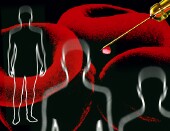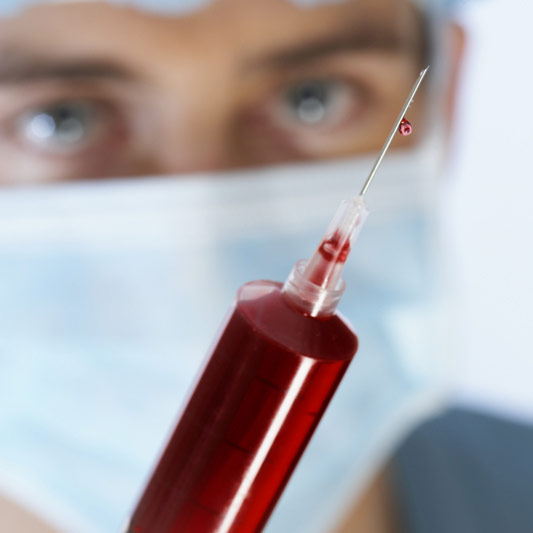
FRIDAY, Feb. 26 (HealthDay News) — New studies provide more proof that the mainstays of anti-clotting therapy, namely warfarin and aspirin, are facing some severe competition from newcomers.
Researchers presenting their findings during a Friday news conference at the American Stroke Association’s annual meeting in San Antonio show that one new drug, dabigatran (Pradaxa), which is not yet approved in the United States, equaled warfarin for treating stroke patients, while cilostazol (Pletal), which has been approved by the U.S. Food and Drug Administration for the treatment of peripheral arterial disease (PAD), outperformed aspirin in preventing recurrent strokes.
Other researchers presented evidence that high-intensity movement exercise assisted by a robot or a human can improve functioning and quality of life in stroke survivors years after the event. It has long been thought that improvements could only be garnered in the early days following a stroke.
The Pradaxa trial included 3,623 patients with atrial fibrillation and a previous stroke who were randomized to receive warfarin, a low dose of Pradaxa (110 milligrams) twice a day or a higher dose (150 mg) of Pradaxa twice a day for about two years.
The rate of stroke or transient ischemic attack (TIA) in those taking warfarin was 2.74 percent a year and 2.32 percent a year for those taking Pradaxa, not a significant difference.
The lower dose of Pradaxa also caused less bleeding and was easier to manage than warfarin, a famously difficult drug to administer and monitor.
“In contrast to warfarin, dabigatran is given in a fixed dose twice daily independent of body weight, sex, food, whatever, and you don’t need to monitor the coagulation system,” study author Dr. Hans-Christoph Diener, chairman of neurology at University Hospital in Essen, Germany, said during the news conference.
“In patients who already had a transient ischemic attack or stroke and suffer from atrial fibrillation, dabigatran is as effective as warfarin,” he added. “And it’s much easier to handle.”
Patients receiving Pradaxa had more heart attacks than those taking warfarin, but the absolute difference was small, the authors stated. Also, Pradaxa patients had higher rates of gastrointestinal bleeding.
The study was funded by Boehringer-Ingelheim GmbH, which makes this drug.
A second trial pitted the clot-busting drug Pletal against aspirin and found that Pletal was superior in preventing recurrent strokes without the bleeding complications associated with aspirin.
Among 2,700 stroke patients in the trial, those taking Pletal were 25.7 percent less likely to have a stroke than those taking aspirin. The authors had expected the stroke rate to be the same between the two groups.
“We conclude that the cilostazol is one of the options for the secondary prevention of stroke in patients who can tolerate long-term administration of this drug,” said study author Dr. Yukito Shinohara, head of neurology at Tachikawa Hospital in Tokyo.
This trial was funded by Otsuka Pharmaceutical Co., Ltd, which makes cilostazol.
The final study turned to technology to help patients severely debilitated by a stroke.
“Upper extremity impairment is very common after a stroke and there are very few therapeutic options for people with chronic stroke and few studies on rehabilitation,” said study author Dr. Albert C. Lo, a neurologist at the VA Medical Center and an assistant professor of neurology at Brown University in Providence, R.I.
Patients receiving high-intensity movement therapy — either from a human or a robot — experienced improved functioning in their arm and improved quality of life compared with patients getting “usual care.”
“High-intensity movement matters for these individuals,” said Lo. “Getting them to move their arm on a regular basis and practice results in a fairly modest improvement. We’re not talking about curing anyone. There are modest but consistent improvements in quality of life.”
The robot-assisted protocol cost about the same as conventional therapy — about $3 a day over a year, if you exclude the actual cost of the robot.
More information
The American Stroke Association has more on stroke.

